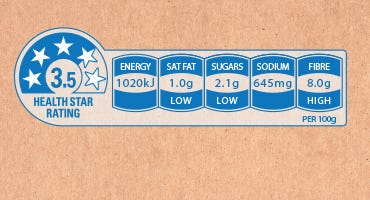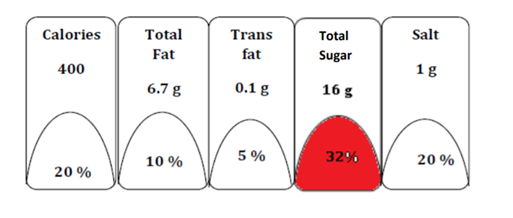In today's Finshots, we talk about Nestlé's confession, unhealthy food and new labelling guidelines
The Story
It’s big news already. An internal report from Nestlé S.A seems to have implied that 60% of their products are unhealthy, according to a story in the Financial Times. Unhealthy how you ask?
Based on Australia’s health star rating system, a rather authoritative guide on ranking edible products. In their own words —
The Health Star Rating system is based on comparing products within similar food categories and allows us to quickly compare the general nutritional profile of foods within that category. For example, we can compare one breakfast cereal with another, one muesli bar with another, or one margarine spread with another… Health Star Ratings can help you choose between similar products which are typically displayed together (e.g. whole grain bread and white bread)

A health star rating of 3.5 or less is generally deemed unhealthy and it seems that 60% of Nestle’s products don’t make the cut. Now bear in mind, we don’t know specifically how this information relates to Nestlé India products. But what we do know is that this story is hardly surprising.
Multiple studies have already pointed out how Indian food manufacturers routinely get away by pushing unhealthy alternatives on unsuspecting consumers. And while they will argue that they provide the requisite nutritional information on the packages, there is a big problem here.
Nutrition information displayed on the back isn’t very useful to the general public. In fact, it’s a bit rich to expect people to be proficient with nutrition literature when a quarter of the population can barely read. Here’s what one study had to say about Indians using nutrient information to make purchase decisions —
“Although 90 % of consumers across the age groups read food labels, the majority (81 %) looked only for the manufacturing date or expiry/best before date. Of those who read labels, only a third checked nutrition information and ingredients. Nutrient information on labels was not often read because most consumers either lacked nutrition knowledge or found the information too technical to understand.”
But guess what they did read and understand? Symbols!
Color-coded symbols with interpretive text (eg, vegetarian and non-vegetarian symbols). And they are more likely to pay attention if it’s printed on the front. In fact, the country’s food regulator, FSSAI had published a draft paper in 2018, in a bid to overhaul food labeling and display guidelines. And it had some pretty solid suggestions.
For instance, consider the recommendation on color-coding certain basic nutrient information — If a serving contained sugar, salt, or fat beyond a specified threshold (say 30% of the recommended daily intake), then a red block would indicate to consumers that they aren’t necessarily making a healthy choice. After all, if you consume a sizeable part of your daily recommended sugar intake with a single candy bar, then you should be entitled to know upfront you’re making that choice. In fact, the food regulator even noted that they “may introduce a color-coding system in addition to marking of foods as ‘Red’ within the specified thresholds from time to time.” Perhaps alluding to the fact that the blocks may be colored red, orange, and green, depending on the health risk they pose.

Unfortunately, however, the draft regulations haven’t been enforced yet. Partly due to resistance from manufacturers who believe that the current regulations may have a detrimental impact on their business. And they’re right — A red block pasted on the front within a principal display panel would obviously dissuade consumers from buying certain products. However, that’s the whole point here. If the display were prominent and people knew that they were consuming something that wasn't necessarily a healthy alternative, they would switch. Today, most people are oblivious to the fact that they consume their recommended daily salt intake just by munching on a few chips. And it is incumbent on the regulator to communicate this fact in an easy-to-understand manner. It’s perhaps the only way you could get manufacturers to fall in line.
And while it's imperative that we design these new guidelines after collaborating with all the stakeholders in the industry, delaying these new regulations might not bode well for a public that’s already reeling from a health crisis.
Until then…
Don't forget to share this article on WhatsApp, LinkedIn and Twitter.
